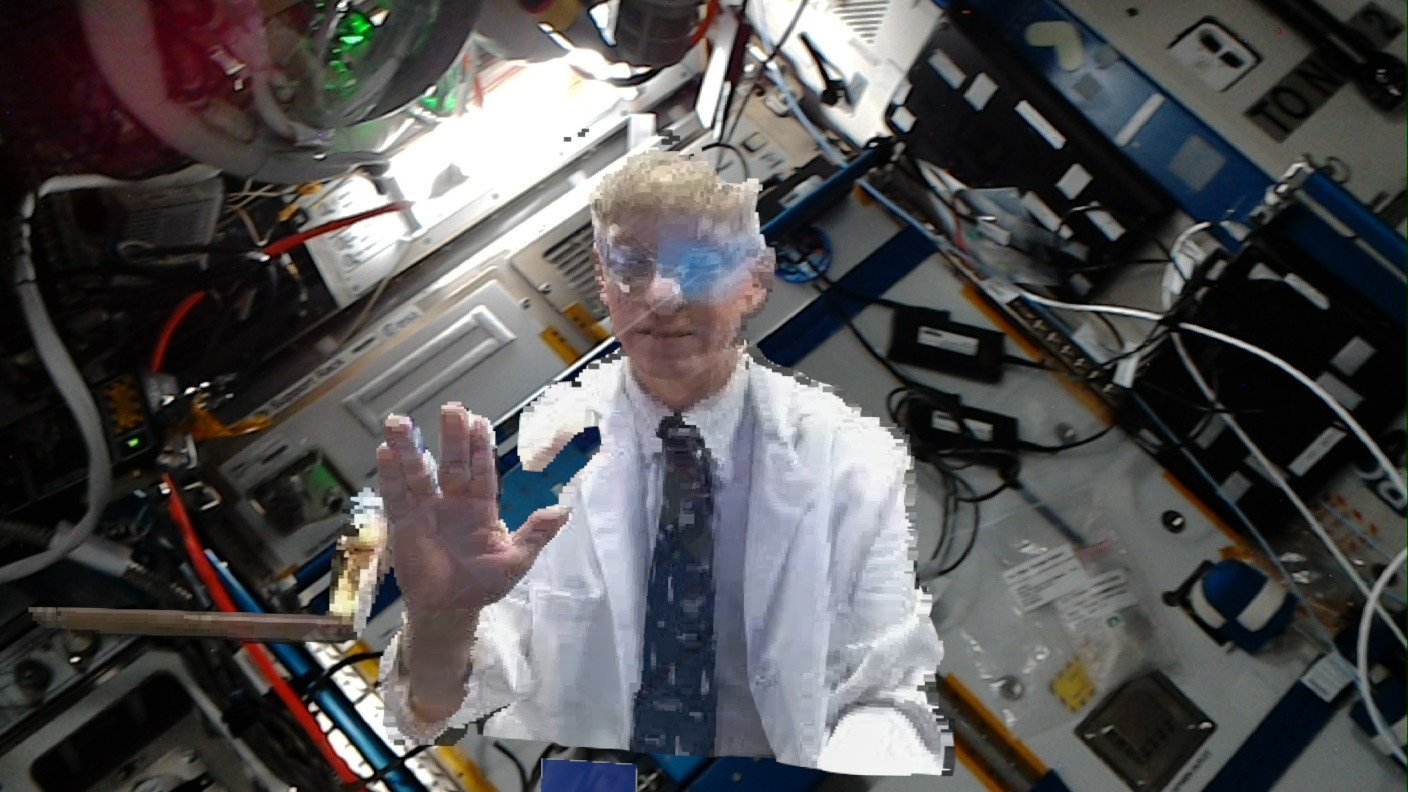Microsoft Hololens tech helps scientists virtually teleport to the International Space Station
Microsoft's AR technology helped project people hundreds of miles to the International Space Station.

What you need to know
- A Microsoft HoloLens Kinect camera was used to "holoport" a group of people from Earth to the International Space Station.
- Holoportation refers to 3-D scanning people in real-time and projecting the scanned image to a HoloLens headset.
- The technology allowed a group of people to appear as if they teleported to the International Space Station as it traveled 17,500 mph in orbit 250 miles above the Earth's surface.
Usually, it's hard to have company when living aboard the International Space Station (ISS). But thanks to technology from Microsoft, astronauts can have visitors any time they'd like, at least virtual ones. Microsoft's technology was used to "holoport" humans to the ISS in October 2021 (via Space.com). A HoloLens Kinect camera was used to record a group in 3-D and then project their likenesses through a HoloLens headset worn by astronauts on the space station.
NASA flight surgeon Dr. Josef Schmid, industry partner AEXA Aerospace CEO Fernando De La Pena Llaca, and their respective teams were the first people to ever be holoported from Earth into space.
To make the process work, the Hololens camera and headset were used in conjunction with custom software from Aexa. ESA (European Space Agency) astronaut Thomas Pesquet was able to hold a conversation with Schmid and De La Pena while the latter two appeared virtually as holograms.

"This is completely new manner of human communication across vast distances," said Schmid. "Furthermore, it is a brand-new way of human exploration, where our human entity is able to travel off the planet. Our physical body is not there, but our human entity absolutely is there."
Schmid highlighted the fact that the setup does not require people to be stationary. In fact, a ship can travel several times the speed of sound and still receive holoportation signals.
"It doesn't matter that the space station is traveling 17,500 mph and in constant motion in orbit 250 miles above Earth, the astronaut can come back three minutes or three weeks later and with the system running, we will be there in that spot, live on the space station," Schmid explained.
This is another example of science fiction coming to life. Holograms have been used to communicate through space in various shows and films, such as Stargate, Star Wars, and Star Trek. Microsoft's implementation of having a headset project images on a screen is a bit different than what's usually shown in cinema, but it appears to be effective.
All the latest news, reviews, and guides for Windows and Xbox diehards.
Microsoft is heavily involved with space exploration and experimentation. The company has partnered with NASA, Hewlett Packard Enterprise, and several other aerospace organizations. Microsoft's work includes scanning the equipment of astronauts for damage and improving satellite imagery with AI.

Sean Endicott is a news writer and apps editor for Windows Central with 11+ years of experience. A Nottingham Trent journalism graduate, Sean has covered the industry’s arc from the Lumia era to the launch of Windows 11 and generative AI. Having started at Thrifter, he uses his expertise in price tracking to help readers find genuine hardware value.
Beyond tech news, Sean is a UK sports media pioneer. In 2017, he became one of the first to stream via smartphone and is an expert in AP Capture systems. A tech-forward coach, he was named 2024 BAFA Youth Coach of the Year. He is focused on using technology—from AI to Clipchamp—to gain a practical edge.
